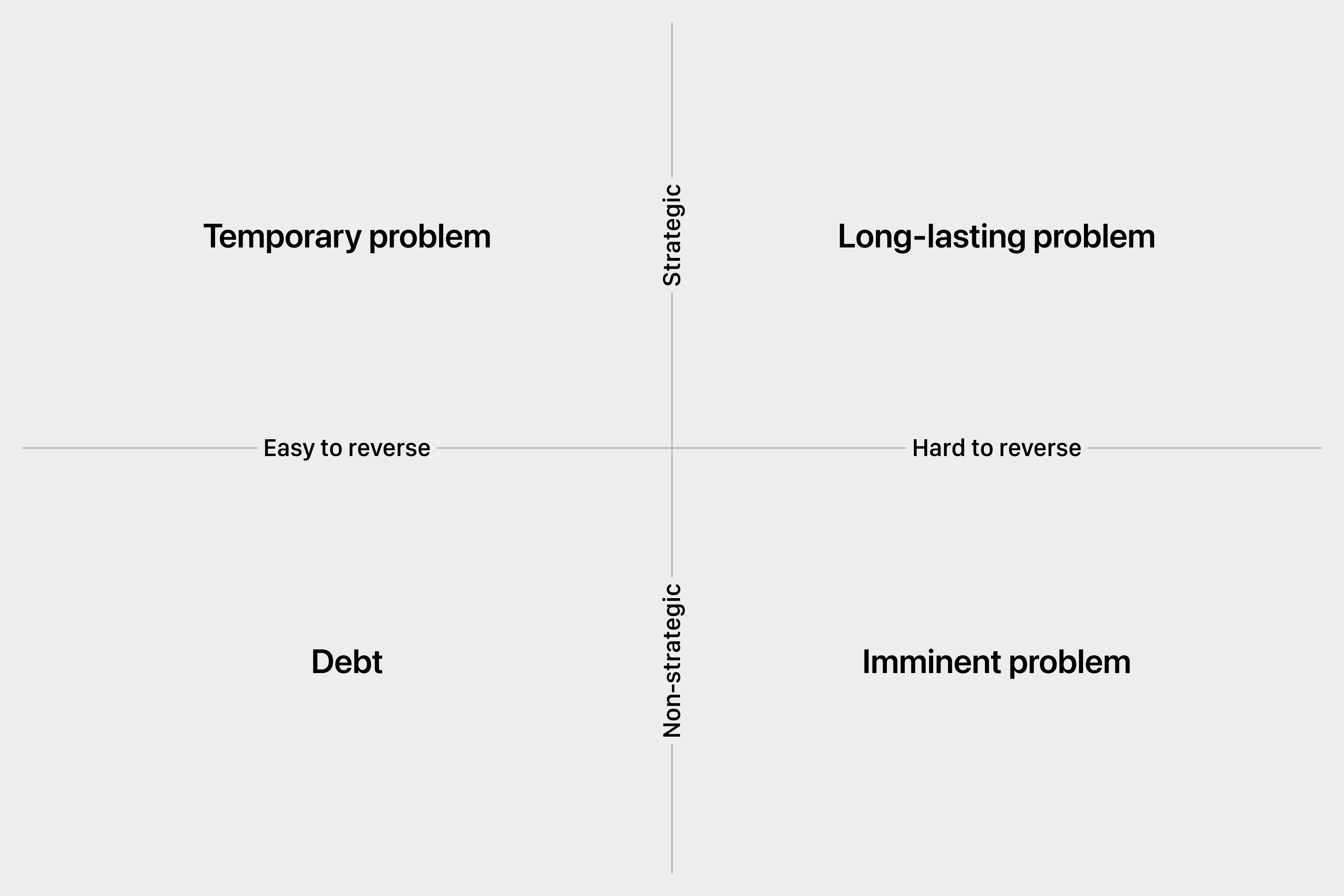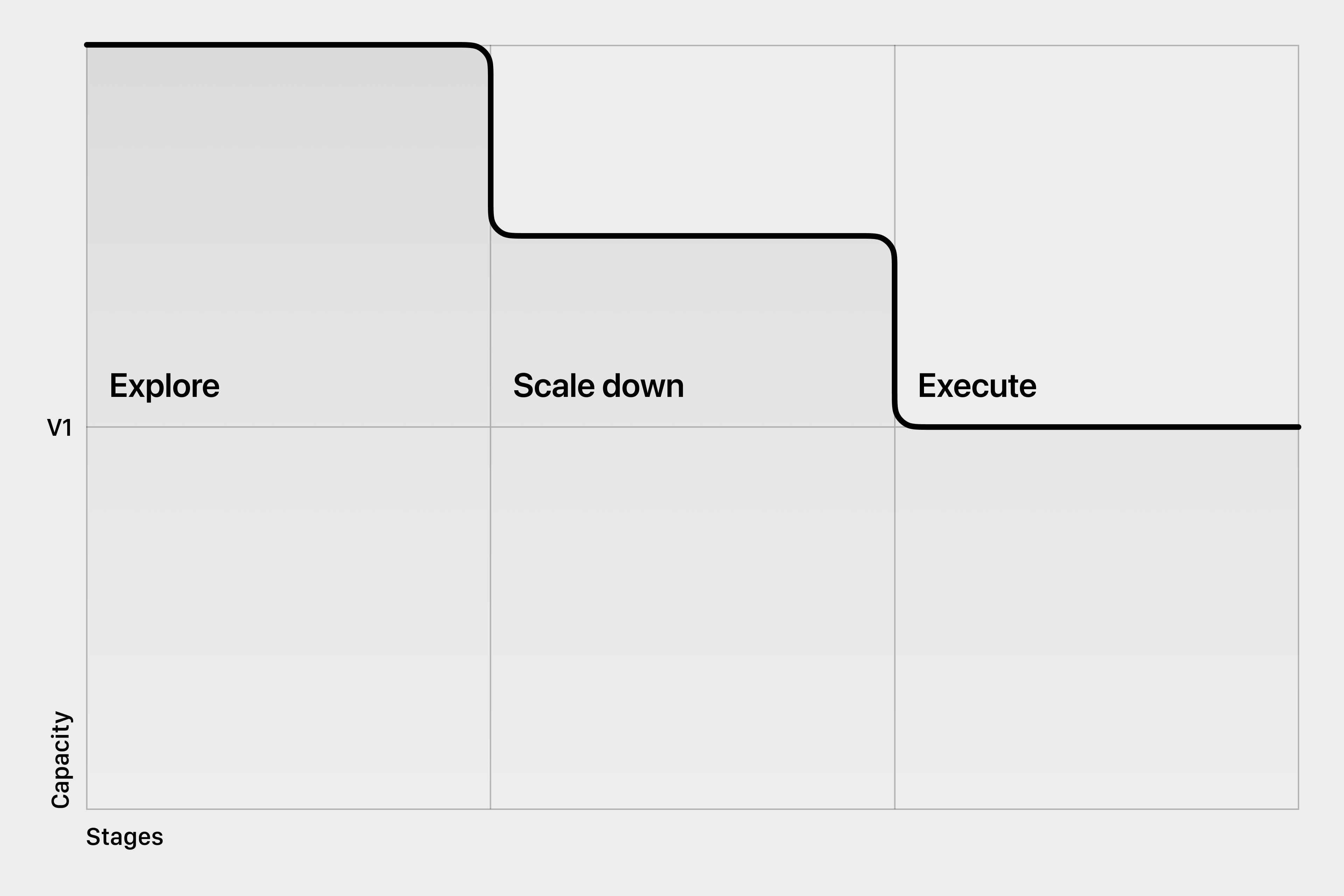Once the problem is defined and verified, you proceed to the exploration stage. It's a problem-solving space that precedes execution. Exploration strategy mirrors the company's culture, so you can see its reflection in the level of quality and innovation of your product.
Impact
Every product works the way it works because of expectations founders set for the organization. As an employee, you likely have a good sense of when your work meets the standard. And as a design leader, you understand how incredibly hard it is to adopt a different strategy.
Here's my approach to exploration and tips for achieving better results.
For leaders
Not exploring enough leads to short-term thinking, quality issues, and overlooked ideas. Excessive exploration distances you from results as its value diminishes over time. Understanding trade-offs helps maintain the right balance and navigate in a fast-paced environment.
 Outcomes of poor exploration
Outcomes of poor exploration
Hard to reverse decisions
In-depth exploration is essential for work that's difficult to undo. Users hold high expectations in such scenarios, and failure is costly. In strategic work like launching a product aimed to bring revenue or growth, customers expect a well-thought-out solution. For non-strategic work like changing system's core components to make sure it scales, users expect their daily tasks won't be disrupted.
Easy to reverse decisions
Work that can be easily reversed benefits from a faster release cycle, allowing for quick learning from users. Also, users love when you listen to them and keep fixing bugs. However, this area is often the primary source of design debt and missed opportunities. Good exploration ensures quality and sometimes leads to elegant solutions to multiple problems.
Common language
Lastly, terminology is challenging. Align on definition with your team and other functions by explaining exploration's purpose, timing, members, ownership, process, and expected outcomes. Involve your team in understanding. Continuously learn from the process and make necessary adjustments.
For makers
 Approach
Approach
Delay constraints
It's common to approach the exploration stage like execution, assuming the direction is already determined by technical constraints. Fixating on limitations too early can stifle potentially better ideas. Give yourself some room to explore: you may discover than some of the boundaries are flexible. Fresh ideas foster innovation and encourage others to investigate, even if implementation isn't feasible today.
Iterate
In my early days, I received advice that stuck with me: unless you believe your idea is truly exceptional, come back with 50 more versions. Organize your process so it's easy to iterate on individual parts whenever needed. Don't focus too much on perfection early on, as it slows down progress. Recognize when your approach is counterproductive and experiment with new methods.
Have opinions, lightly held
It's expected that every expert can offer a strong opinion, as others depend on their insights. Being opinionated allows you to express your perspective effectively, leading to faster decision-making. In case of disagreement, put business priorities first while still committing to the goal. Democracies rarely work in the companies.